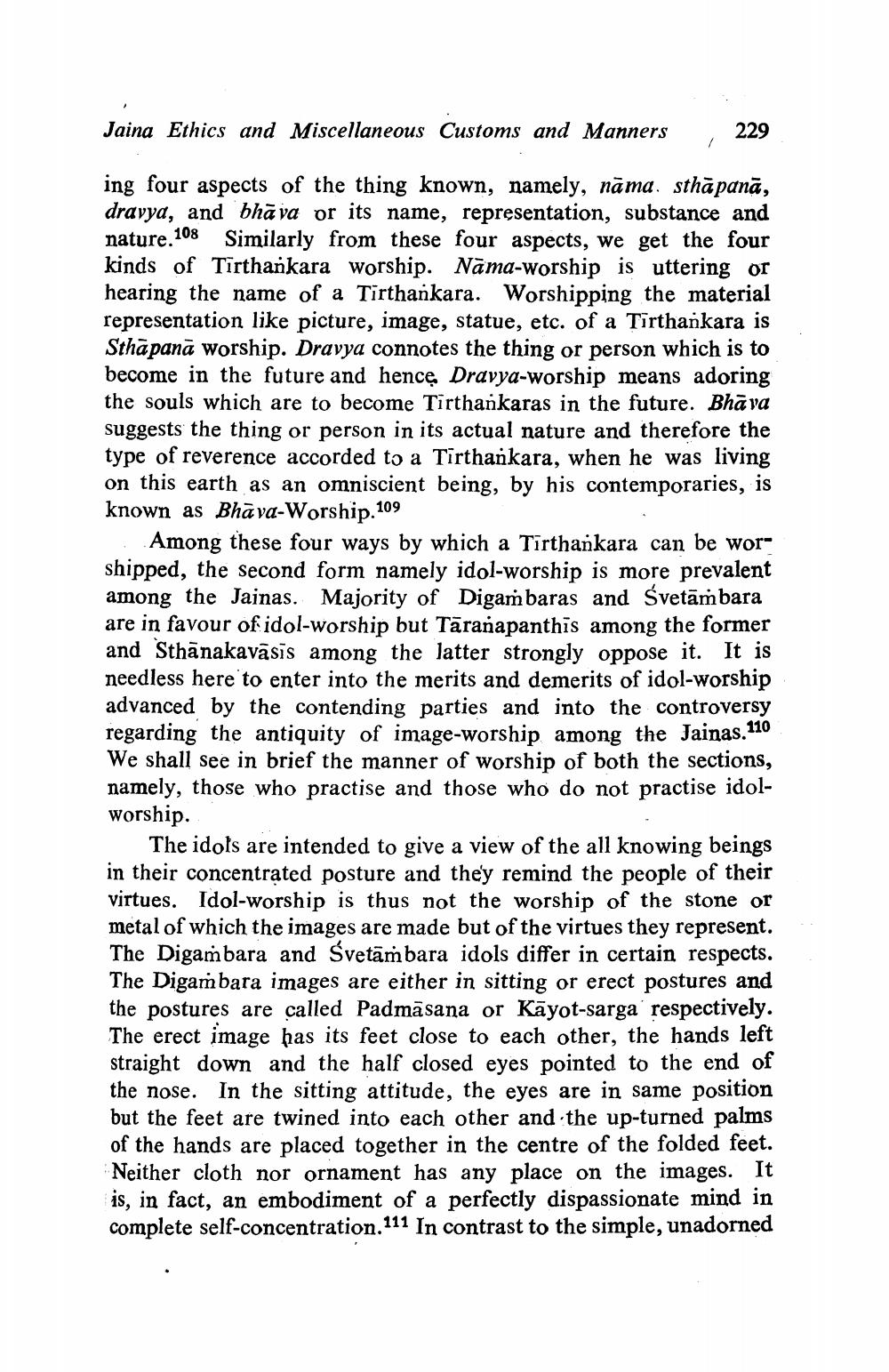________________
Jaina Ethics and Miscellaneous Customs and Manners
229
ing four aspects of the thing known, namely, nāma. sthāpanā, dravya, and bhāva or its name, representation, substance and nature. 108 Similarly from these four aspects, we get the four kinds of Tirthankara worship. Nāma-worship is uttering or hearing the name of a Tirthankara. Worshipping the material representation like picture, image, statue, etc. of a Tirthankara is Sthāpanā Worship. Dravya connotes the thing or person which is to become in the future and hence Dravya-worship means adoring the souls which are to become Tirthankaras in the future. Bhāva suggests the thing or person in its actual nature and therefore the type of reverence accorded to a Tirthankara, when he was living on this earth as an omniscient being, by his contemporaries, is known as Bhāva-Worship.109
i Among these four ways by which a Tirthankara can be worshipped, the second form namely idol-worship is more prevalent among the Jainas. Majority of Digambaras and Śvetāmbara are in favour of idol-worship but Tāranapanthis among the former and Sthānakavāsis among the latter strongly oppose it. It is needless here to enter into the merits and demerits of idol-worship advanced by the contending parties and into the controversy regarding the antiquity of image-worship among the Jainas. 110 We shall see in brief the manner of worship of both the sections, namely, those who practise and those who do not practise idolworship.
The idols are intended to give a view of the all knowing beings in their concentrated posture and they remind the people of their virtues. Idol-worship is thus not the worship of the stone or metal of which the images are made but of the virtues they represent. The Digambara and Svetāmbara idols differ in certain respects. The Digambara images are either in sitting or erect postures and the postures are called Padmāsana or Kayot-sarga respectively. The erect image has its feet close to each other, the hands left straight down and the half closed eyes pointed to the end of the nose. In the sitting attitude, the eyes are in same position but the feet are twined into each other and the up-turned palms of the hands are placed together in the centre of the folded feet. Neither cloth nor ornament has any place on the images. It is, in fact, an embodiment of a perfectly dispassionate mind in complete self-concentration.111 In contrast to the simple, unadorned




